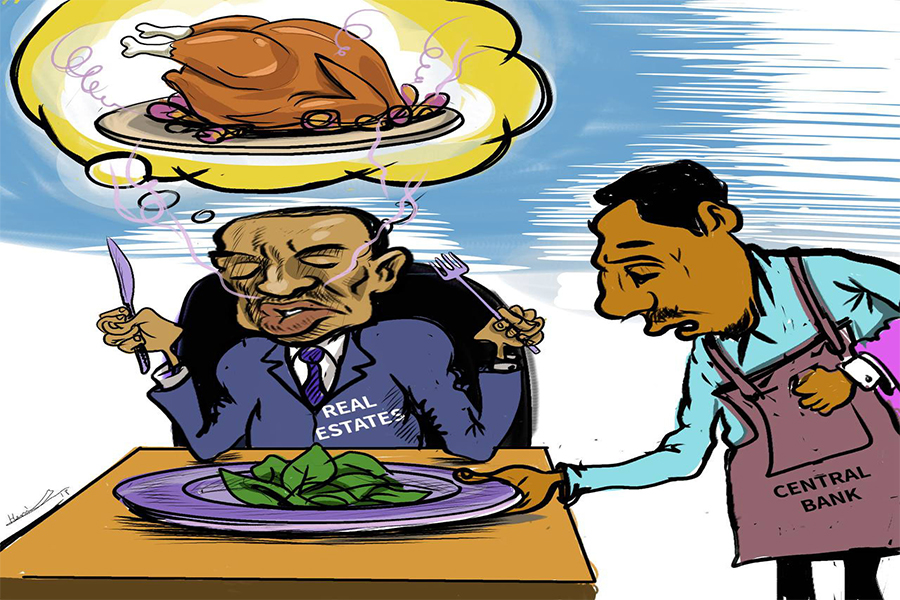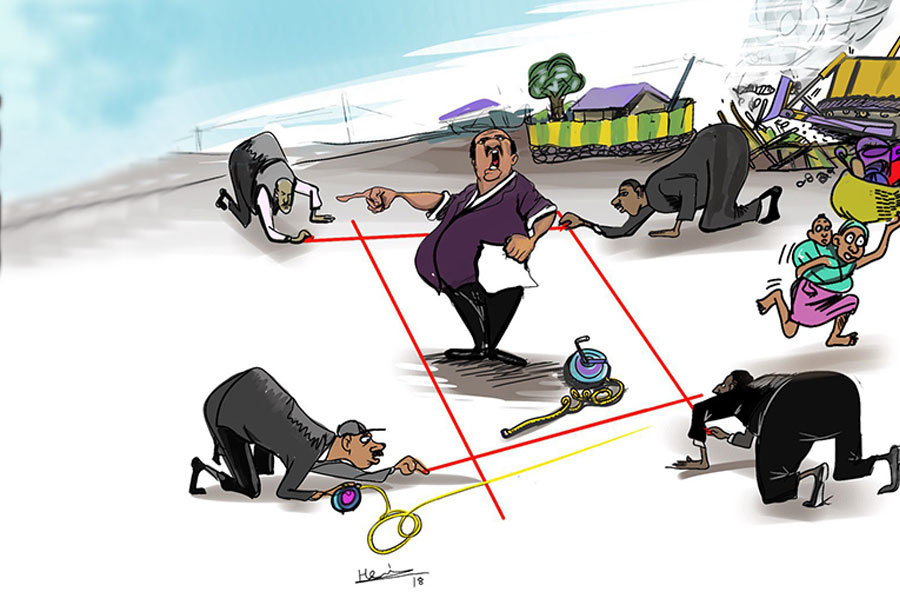
Photo Gallery | 173943 Views | May 06,2019
May 17 , 2025.
The foreign exchange market had a telling week, and the story was all in the margins. Last week, the Central Bank nudged its official cash-buying rate from 130.47 Br to 132.17 Br for a dollar, a small but steady slide that reaffirmed the Brewed Buck's continuing weakness.
The real issue, though, was in the gap between what the Central Bank paid for dollars and what it charged to sell them. That spread opened the week on May 12, 2025, at a roomy 2.39pc, retreated to a whisker-thin 0.01pc by midweek, and finished at 0.41pc six days later. In a market accustomed to rigid, predictable spreads, the whiplash unveiled that policymakers were tinkering with a new approach, perhaps testing how much wiggle room they have to manage liquidity without sparking panic.
Commercial banks had their average buying rate set at 131.79 Br, while the average selling rate was posted at 134.43 Br. The uniform spread between their buying and selling rates reveals an unwritten pact among bankers to shelter retail customers from daily volatility. Look closer, though, and the facade of solidarity begins to crack. Across those six days, the market’s composite figures came in lower, an average 128.73 Br on the buy side and 131.39 Br on the sell side, still about a two-percent margin but with notable dispersion behind the headline.
One point of convergence was the narrowing wedge between the Central Bank’s bid and the commercial-bank average. By May 17, the gap in buying rates had shrunk to 0.38 Br, while the selling rate was still more generous than the private banks' mean. A tighter official spread lowers conversion costs for large trades and unveils a deliberate push to coax high-volume transactions back onto the books.
The week’s sharpest jolt came overnight between May 12 and 13, when the Central Bank bumped its buying rate by 2.32 Br to 132.79 Br. Such lurches are usually a telltale sign of stress, whether from import bills piling up, donor inflows lagging or hoarding by traders bracing for another depreciation. However, the Central Bank let the selling rate slip a bit, cushioning exporters who convert their dollar earnings. Policymakers swallowed part of the pain so that a sudden adjustment did not look like a rout.
That manoeuvre captures a broader dilemma. On one side stood a Central Bank willing to flex spreads, apparently as a fine-tuning tool linked to its bi-weekly foreign-exchange auctions. On the other side are banks that prefer calm to cleverness and leave their posted spreads untouched. The outcome is a dual-track system: cash counters at banks follow a rule book, while auction allocations to priority sectors dance to a different tune.
Experiments, of course, invite confusion. The midweek collapse of the spread to virtually nothing, and its rebound a day later, raised eyebrows in a market that prizes predictability. If players cannot guess tomorrow’s spread, they hedge harder or slip into the parallel market, where rates already trade at fatter premiums, now edging to 155 Br for a dollar.
Beneath the averages, individual banks have been telling their own stories.
Oromia Bank has cast itself as the price leader since mid-April, dangling 134.40 Br to buy dollars and 136.92 Br to sell, well above anyone else’s board. Its bold posturing is a magnet for diaspora remittances and exporters shopping for the best deal. On the opposite end sits the state-owned Commercial Bank of Ethiopia (CBE), which last tweaked its board in December 2024 and still posts 124.01 Br to buy and 126.49 Br to sell.
However, the CBE tops up incoming dollar deposits with a 10-Br bonus, keeping its posted rates stable for optics while narrowing the true gap. Private banks such as Enat, Wegagen and Amhara lie between those poles, which trace the Central Bank’s footprints but always keep a clean two-percent spread.
That variety sorts banks into three loose clusters. The “static conservatives” rarely change anything, a club that includes CBE and Berhan Bank, all keen to spare their depositors from daily dramas, or to obey tight internal edicts. Next come the “moderate adjusters,” such as Dashen, Zemen, Bunna and Nib banks, whose boards move in rhythm with the Central Bank yet still target comfort-size margins. There are the “aggressive leaders” — Oromia, Goh Betoch and Siinqee banks — whose big numbers bet that swooping in on premium business will outweigh the risk of regulatory pushback.
Whatever the strategy, all banks face the same headwinds.
Ethiopia’s current account deficit remains yawning. The permanent demand for dollars outstrips supply, and reserve cover is thin. The deficit is projected to be around three percent of GDP this year, roughly translating to 5.5 billion dollars based on the GDP estimate. Without an external lifeline, the Brewed Buck almost inevitably edges lower, and any whiff of policy improvisation can rattle confidence.
Still, a carefully managed divergence in spreads can reveal when and where pressure points lie. If the Central Bank can read that map correctly, it may tease out a transition to a more flexible regime while keeping the market onside.
Importers appreciate thinner spreads only as long as the rates hold. Exporters like an official selling rate that does not penalise them for converting hard currency. Always alert to mispricing, speculators watch for those fleeting windows when uneven spreads open arbitrage lanes before the Central Bank slams them shut. As each group probes the edges of policy, the Central Bank Governor, Mamo Mihretu, should juggle three tasks: signalling reform, keeping confidence and not draining scarce reserves.
Results from the next foreign-exchange auctions will show whether the official rate strategy clears the market or clogs it. Participation levels and bid ranges will signal how much hard currency remains in private hands. Commercial Bank should decide whether to mimic Oromia Bank’s high-octane pricing, stick to CBE’s glacial approach, or strike a safer middle line taken by the big five: Awash, Dashen, Abyssinia, Wegagen and Zemen.
The Brewed Buck had slipped only slightly at week's close, but the conversation had moved a long way. Spread management, once a back-office routine, is now a front-burner signal watched by importers tallying invoices, exporters weighing contracts and households gauging the next jump in prices. Whether Ethiopia ends up with a smoother, market-friendly currency, or recoils to the shelter of tight regulation, will depend on how deftly Governor Mamo can keep writing, erasing and rewriting those thin lines between what the Central Bank pays and what it charges.
PUBLISHED ON
May 17,2025 [ VOL
26 , NO
1307]

Photo Gallery | 173943 Views | May 06,2019

Photo Gallery | 164169 Views | Apr 26,2019

Photo Gallery | 154257 Views | Oct 06,2021

My Opinion | 136603 Views | Aug 14,2021

Oct 11 , 2025
Ladislas Farago, a roving Associated Press (AP) correspondent, arrived in Ethiopia in...

Oct 4 , 2025
Eyob Tekalegn (PhD) had been in the Governor's chair for only weeks when, on Septembe...

Sep 27 , 2025
Four years into an experiment with “shock therapy” in education, the national moo...

Sep 20 , 2025
Getachew Reda's return to the national stage was always going to stir attention. Once...